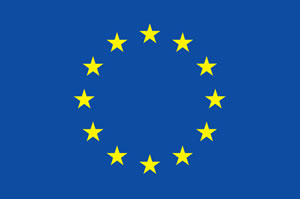Choose the desired format of the data for export. You may choose to export bibliographical information only, or bibliographical information with a brief summary included. In addition, you may choose to include data in normalized form (one hot encoding of variables). In that case, each factor value of every variable accessible in this dashboard app will be included in the spreadsheet, where the exported value is of Boolean type indicating whether a factor value applies to a specific case study (1, denoting True), or does not apply (0, denoting False). Select the variables to include in normal form from the selection as desired.
Identified challenges
Challenges over time
Challenges in the context of world subregions
Choose the chart content.
Challenges in the context of countries
The treemap chart visualizes observation frequencies as size-proportional rectangles, i.e., the higher the number of observations of a given factor, the larger a rectangle. The treemap shown is a two-layered treemap, where the first layer corresponds to societal/environmental challenges, and the second layer to the countries mentioned in a given case study within the context of each specific challenge. Hover over the nodes for more detailed information. Click on a rectangle to open the second layer, and click on the header bar above the treemap to go back to the first layer.
- Identified desired impacts/benefits/targeted ecosystem services
- Identified undesired effects/trade-offs/ecosystem disservices
Desired impacts or benefits
By Region
Choose the chart content.
Benefits in context
Choose the chart content.
Identified actions
By Region
Choose the chart content.
Actions in context
Choose the chart content.
Identified green elements/green space types (Most frequent)
By Region
Choose the chart content.
Types in context
Choose the chart content.
Action - Desired effects - NBS Type
Action - Disservice/Trade-off - NBS Type
The sunburst chart is an alternative to a flow chart. It visualizes the frequency of combined observations, where each observation is rendered as a sector, and the size of the sector illustrates the number of corresponding observations. Here, the sunburst chart has three layers: (i) NBS actions (shown in light green); (ii) the desired impact of these actions, i.e., the benefit or targeted ecosystem service (shown in orange, left chart) or the observed disservice or trade-off (shown in brown, right chart); and (iii) the object associated with the benefit or trade-off, in terms of green element or green space type (shown in darker pale green).
Clicking on a sector will render the next layer, whilst clicking in the center of the chart goes to the previous layer. Hovering over a sector with the mouse reveals the name of the sector and the number of observations.
Identified genera (most frequent)
Records with detailed information
By Region
Choose the chart content.
Number of mentions per genera
Choose the chart content.
Genera in context
Choose the chart content.
Effects of trees identified in the review (specific findings)
The following manuscripts were analysed according to the criteria you selected. Click on a reference to open the respective website/doi link.
Choose the chart content.
The flow chart visualizes the number of observations connecting nodes in the data. Here, nodes correspond to four groups: (i) societal/environmental challenges in the context of cases (shown in red, left); (ii) desired impacts/benefits or ecosystem services studied in the context of each a given challenge (shown in purple, center left); (iii) NBS action undertaken or studied (shown in light green, center right); and (iv) the NBS type/object studied or implemented, such as type of green space (shown in darker pale green; right). The number of observations falling into each node determine the size of a given node, whereas the number of observations of any combination of two nodes is depicted as grey flow, with the size of the flow determined by the corresponding number of observations.
Hover with the mouse over nodes or flows to reveal additional information. You may filter rare flows through the slider by increasing the minimum number of observations to be depicted.
Query result


Several Chinese CLEARING HOUSE partners have also contributed to the funding.
该项目获得欧洲H2020研究与创新计划的资助(拨款协议号码:821242)。部分中国合作伙伴也为此提供了资金 。
To get into contact with us, please send an email to hello@clearinghouseproject.eu . This dashboard by Sebastian Scheuer, Humboldt-Universität zu Berlin, Landscape Ecology Lab.